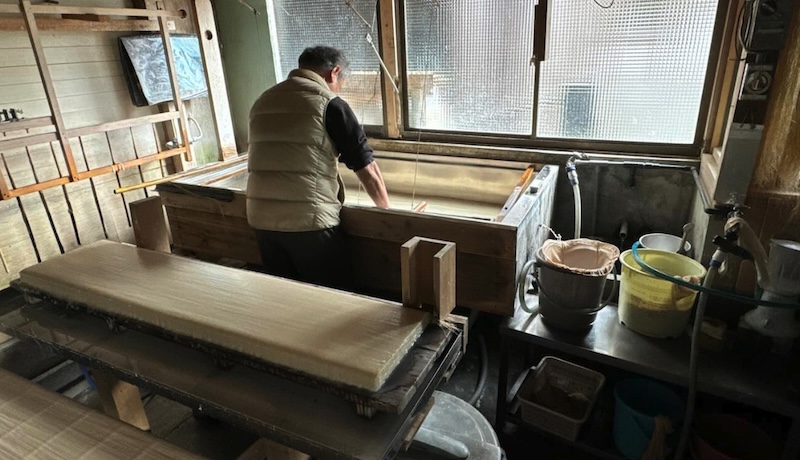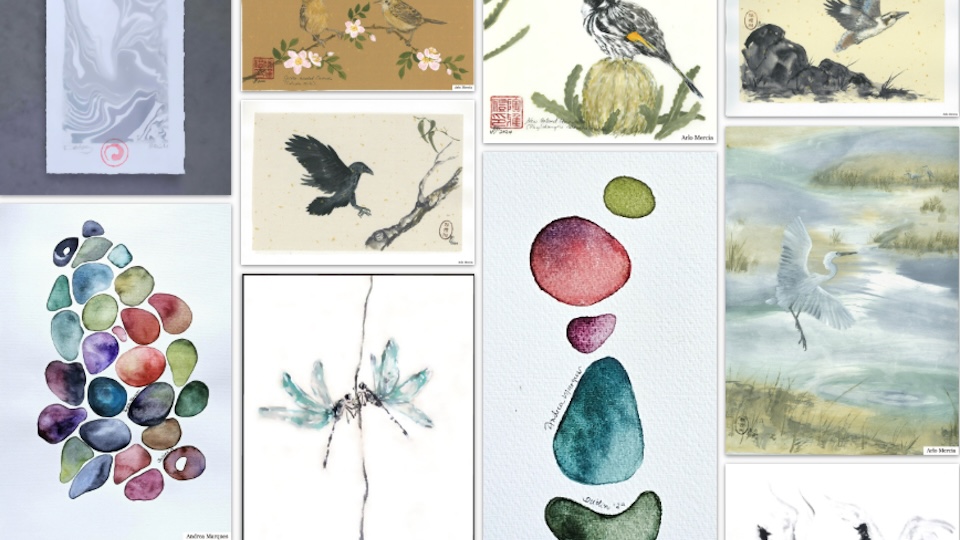Uda gami handmade Japanese Washi paper is famous for being able to be preserved for 1000 years. For this reason, this paper is sought after by world-famous museums and art galleries, including the British Museum and the Museum of Fine Arts, Boston.
In a small village in Nara surrounded by majestic rivers and mountains, handmade Japanese Washi paper has been passed down from generation to generation since the Edo period ( From the middle of the 1600s to the middle of the 1800s.).
Yoshino town is located in the northern part of Yoshino county in the central part of Nara prefecture in Japan. The Yoshino river flows from east to west through the center of the town, and in spring it is known throughout the country as a famous spot for Yoshino cherry blossoms.
In this small village in Yoshino town, surrounded by magnificent mountains and rivers, there is a traditional craft that has been passed down for 1300 years. That is Yoshino handmade Japanese Washi paper ( 吉野手漉き和紙, Yoshino Tesuki Washi).
It is said that the tradition began when Prince Oama ( later Emperor Tenmu, 673 CE to 686 CE) raised an army in Yoshino during the Jinshin War and taught the local Kuzu villagers how to make paper and raise silkworms. In Yoshino, this tradition has continued to be carefully preserved, even as the times have changed.
At the Fukunishi family, they make the highest quality Japanese Washi paper using the kozo (paper mulberry) grown in Yoshino, without using any chemicals, and going through about 48 processes.

There are currently five workshops in Yoshino that make handmade Japanese Washi paper. One of these is Fukunishi family, which has been in business since the Edo period ( From the middle of the 1600s to the middle of the 1800s.).
When we spoke to the sixth-generation head of the company, Mr.Masayuki Fukunishi, he told us that the production method has not changed at all since the old days. The Fukunishi family spend a great deal of time and effort on the processing of the kozo (paper mulberry), including the cultivation and felling of the raw material, steaming, peeling, scraping off the black skin, soaking in the Yoshino River, and drying.
They then boil the kozo to remove the scum and beat the kozo fibers to make a paper material called “kami-so”. This is then mixed with natural materials such as white clay, and the papermaking process can finally begin. They go through a total of 48 processes to create the finest Japanese Washi paper. As paper that has lasted for over 1000 years, the world’s top museums and art galleries are seeking the Fukunishi family’s paper, saying “We want this paper”.
The lifespan of mass-produced paper, such as the paper we use for notebooks and memos, is said to be around a few decades to 100 years. However, the lifespan of the highest quality of Yoshino Washi, Mokuhaini Udagami ( Uda paper boiled in wood ash ) by Fukunihsi family, is over 1000 years.
The reason for this incomparably long shelf life has recently been scientifically explained as being due to the use of wood ash (which does not contain any chemicals) to boil the mulberry bark, the use of white clay, and the beating of the paper pulp on a stone.
It is only possible to preserve records from 1000 years ago and to preserve records from the present day for 1000 years later with Mokuhaini Udagami paper. Thanks to its durability, beauty and ease of use, it is used not only for the restoration of cultural assets such as calligraphy and paintings in Japan, but also as the highest quality paper in the Museum of Fine Arts in Boston in the United States and the British Museum in the United Kingdom.
The will to continue to protect this manufacturing method without changing it. This is why it is difficult, and why they are determined to convey the real thing.
The “Sudare” screens used in the papermaking process at Fukunihsi family are made by artisans in Shikoku, Japan, and all the tools that Mr. Fukunishi uses to make his paper are Japanese-made, including the raw materials. The knowledge and skills of artisans from all over Japan are incorporated into Mr. Fukunishi’s Washi paper making.
Mr. Fukunishi himself is also certified by the Japanese government as a holder of traditional techniques for making handmade Japanese Washi paper. He also travels around the world, not just in Japan, to help preserve cultural assets by making his paper. Fukunishi says, “I will continue to make authentic washi paper without changing anything.”
Please try Mr.Fukuhishi’s handmade Japanese Washi paper, which has been recognized by museums and art galleries around the world, and which connects the world, connects history, and connects techniques.




